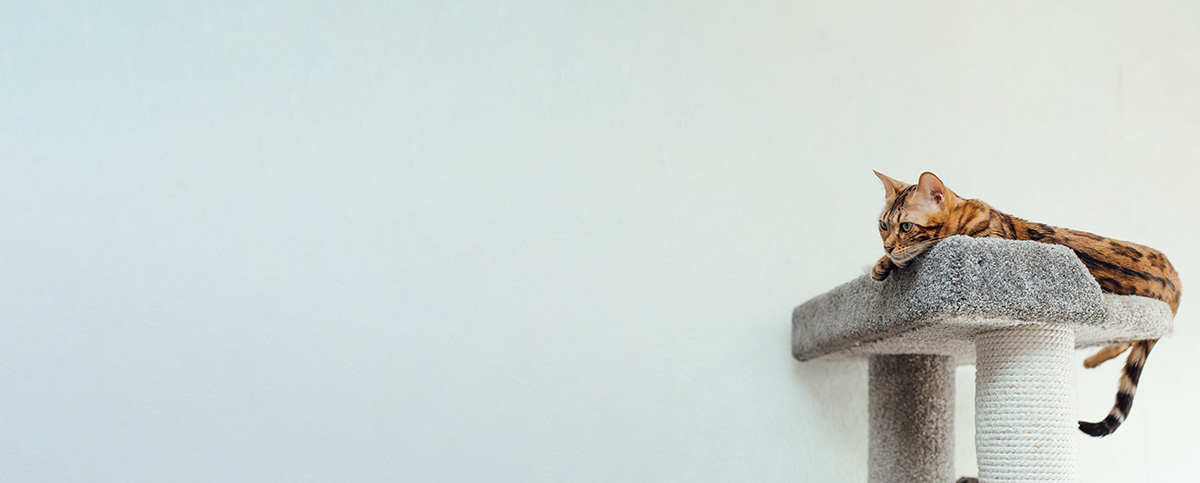Case of the Week #2 – Liver Flukes
Pet: Sassy
Age: 3 yrs, 8 mos.
Species: Feline
Breed: Domestic Shorthair (DSH)
Color: Calico
Sex: Female, spayed
Does your cat chase and eat lizards? If so, you’ll definitely want to read about Sassy:
Sassy presented several weeks ago with an acute onset problem of extreme lethargy, hiding, mild anorexia, and mucousy diarrhea. The condition had started approximately three days earlier and was getting progressively worse. She was still eating some food – about half her normal meal, and there was no vomiting.
Sassy lived in a house with three other cats, all of which stayed indoors and outside on the screened-in lanai. None of the cats ventured beyond the lanai. All four cats were current on vaccines, and all three of the other cats were acting completely normal.
At the time of presentation, Sassy weighed 8.7 lbs, down from 10.5 lbs just 7 months earlier. The owner reported that all of the weight loss seemed to have occurred in just the last few days. Her temperature was normal and she was moderately depressed at presentation.
On physical exam she definitely had an enlarged, firm liver that was sensitive to the touch when palpated. Her spleen, kidneys, intestines, and bladder all palpated normally.
On chest auscultation her lungs were clear and her heart rate was 210 (normal for an adult cat), with no murmurs or arrhythmias. Her peripheral lymph nodes all palpated normally, and her eyes, ears, nose, and throat were all normal except that the skin of her ears and the white parts of her eyes had a distinctly yellow tint. A clinical assessment of her hydration status was normal.
I discussed with the owner that Sassy definitely had some liver issues, as evidenced by her enlarged, firm liver, abdominal pain, and yellow tint to her ears and eyes. The yellow tint is a condition called jaundice, or icterus in medical terms, and it occurs when bilirubin backs up in the bloodstream.
Normal Bilirubin Function
Bilirubin is a garbage product that is produced in the liver from normal metabolic processes. That is, after food is digested the nutrients are absorbed into the bloodstream, and that blood then carries those nutrients to the liver for processing. In the liver, the nutrients are broken down into their component parts and used to fuel the body and build things like muscle.
Bilirubin is formed from the leftover by-products of this nutrient metabolism, along with the breakdown products of normal body processes, such as the turnover of red blood cells. This bilirubin then becomes the main component in bile, which is excreted via the gall bladder and bile ducts into the intestines for elimination in the stool.
Bilirubin can back up into the bloodstream for either of two broad reasons: either 1.) it’s being overproduced, or 2.) it’s not being excreted efficiently via the bile ducts into the intestine, and thus backs up into the bloodstream.
To determine how bad Sassy’s liver condition was, as well as to see what else might be wrong we ran lab work in-house. For most medical cases that require this sort of workup, there are two blood panels we run: a CBC and a chemistry profile.
The CBC, or Complete Blood Count, tells us about all the cellular components of the blood. It not only tells us a total red blood cell count to see if the pet is anemic, but it also gives us parameters for red cell size, shape, and color, all of which can be important given certain conditions. It also tells us values for all five types of white blood cells, as well as platelets.
The chemistry profile gives us complete panels for kidney, liver, pancreas, and thyroid function, as well as blood sugar and cholesterol, proteins, electrolytes, and minerals. Together, the CBC and chem profile gives us a great overview of the pet’s overall health.
Sassy’s CBC had a couple of abnormalities, both mild. Her red cell count was just slightly low, meaning she was anemic. Her red cell parameters (size, shape, color, etc) were normal. This type of anemia can occur in any animal that has had a chronic, ongoing disease process. That made us suspicious that although her condition presented acutely, she probably had been harboring the problem for at least several weeks.
Her total white cell count was normal; however, one of her white cell lines – eosinophils – was mildly elevated. Eosinophils usually elevate when the pet is either fighting off parasites or suffering from allergies.
The chemistry profile had mild elevations in three different liver enzymes and a drastic elevation in total bilirubin. Normal bilirubin in a cat is 0.1 to 1.0. Sassy’s was 5.3. Other organ function parameters were within normal limits.
At this point we had enough information to start formulating a diagnosis. The most common condition that affects the liver in cats is a spontaneous inflammation called Cholangiohepatitis. However, Cholangiohepatitis usually doesn’t cause jaundice like we were seeing in Sassy. Also, Sassy had mildly elevated eosinophils, which would be unusual to see in Cholangiohepatitis.
So while Cholangiohepatitis would be the most common diagnosis in a cat with liver disease, in this case, I was very suspicious that Sassy suffered from a much more rare condition called liver flukes.
To diagnose this we sent a fecal sample to our outside lab for analysis. They did confirm that Sassy had liver fluke eggs in her fecal sediment, which confirmed our diagnosis. Sassy was treated routinely for liver flukes and made a full recovery.
How Cats Get Liver Flukes
Liver flukes are found in the liver of cats and wild carnivores in the Southeast U.S. They are a small parasite that is transmitted from one animal to another through lizards. The small lizards that run all over Florida – technically called anoles – are a perfect intermediate host for liver flukes.
In this case, although Sassy never went outside the lanai, the owner did confirm that she chased anoles inside the lanai and ate them. That explained why she was sick and the other cats in the household were all fine, as none of them were hunters like Sassy. Flukes cannot be transmitted directly from one cat to another. They must go through an intermediate host – in this case, it was lizards.
It has been estimated that as many as 50% of outdoor cats in Florida actually have some liver flukes in their liver. The vast majority of these cats show no symptoms and lead a normal life. Occasionally, however, the fluke load in a cat can overwhelm their defense mechanisms and they become ill.
In the liver fluke cases we’ve seen at Acupet Veterinary Care the routine presentation is an acute onset of weight loss, lethargy, and varying degrees of anorexia. Jaundice is a hallmark of the clinical presentation in these cats.
The easiest way to avoid liver fluke infestation is to keep your cat completely indoors at all times. Limiting access to lizards in outdoor cats is a nearly impossible task. If your cat does go outside, awareness of the signs of fluke disease as described above, along with an immediate presentation to the vet when signs do arise, is the best way to ensure a positive outcome.
Cookies on this website are used to both support the function and performance of the site, and also for marketing purposes, including personalizing content and tailoring advertising to your interests. To manage marketing cookies on this website, please select the button that indicates your preferences. More information can be found in our privacy policy here.
We've upgraded our online store!
Ordering your pet's favorite food and medicine is now easier than ever.
Order Food & Meds
Quick & Easy Registration

Please use the phone number and email you currently use for hospital communications to link your account!
Linked Pet Records & Rx

Your pet's prescriptions and records will be waiting for you!
Pawsome
Savings!

AutoShip discounts, promotions on your favorite products and more!


